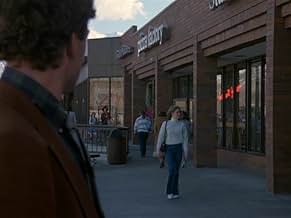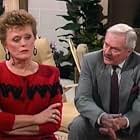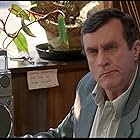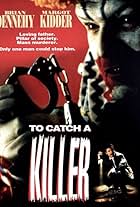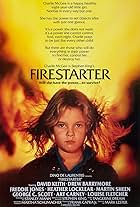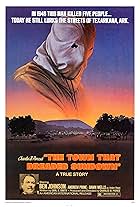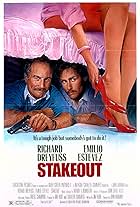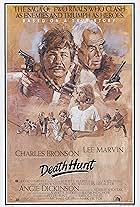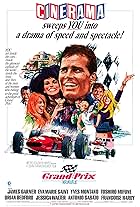IMDb RATING
7.3/10
2.7K
YOUR RATING
The story of serial killer, Ted Bundy.The story of serial killer, Ted Bundy.The story of serial killer, Ted Bundy.
- Awards
- 1 win & 3 nominations
Browse episodes
Storyline
Did you know
- TriviaAccording to Ann Rule, in an updated edition of her nonfiction bestseller "The Stranger Beside Me," the real Ted Bundy started to receive hundreds more love letters per day after The Deliberate Stranger (1986) first aired on NBC. Rule concluded that many of the women were actually writing to Mark Harmon, or imagining that Bundy looked and acted more like Harmon than Bundy did in reality.
- GoofsThe Utah mall incident occurred in 1974 yet the Stevie Nicks album "Rock a Little", which is displayed on the store window behind Bundy and his intended victim, was not released till 1985.
- ConnectionsFeatured in WatchMojo: Top 10 Films About Serial Killers (2018)
Featured review
Considerably above average for a TV made-for. There may be factual changes but to someone not familiar with the details of Bundy's career, they can't be too damaging. And the film sort of stands by itself as a craftsmanlike piece of work on the part of just about everyone concerned with it. Marvin Chomsky directed with economy and efficiency, except perhaps for a bit too much complaining and self-pity on the part of police officers.
He was faced with a problem, namely that viewers already knew how the story "came out," and has at least made an attempt at heightening the suspense by showing only Bundy's shoes plodding along the dark streets before each murder, until his last awful blood feast, when we see his face twisted with passion. Mark Harmon, who elsewhere gives performances that an especially handsome mannequin could turn in, is surprisingly good. He has that phony self-revealing charm, that fleeting smile, that serves as a mask of sanity. He also gives a bang-on definition of "sociopath" to Dick Larson on the other side of the prison bars.
There is some disagreement among knowledgeable visitors to the courtroom when in the course of defending himself Bundy begins to choke up with emotion. "What a performance," mutters one of the cops. "Or maybe," says Larson, "he really is feeling the suffering himself." Well, Dick -- sorry, but the cop was right. It isn't that sociopaths (or anti-social personality disorder, unsocialized type, as they're now called) don't feel their own suffering; it's just that it's fleeting. (There is a pattern that appears in responses to the Minnesota Multiphasic Personality Inventory that is known to clinicians as "the caught psychopath" pattern.)
There's a lot of depression, yes, but it disappears quickly because sociopaths are so adaptable, so good at exploiting their environments. Bundy is shown constantly cadging butts from friendly visitors. A good sociopath would care much more about the cigarettes than the affection they're getting.
Serial killers (the term didn't really exist until about the time Bundy appeared on the scene) are intrinsically fascinating because there is no part of most of us that can begin to understand their motives. Most homicides take place between friends and relatives. We murder them because they are in a position to hurt us. We value their opinions of us. But the ghastly murder of one stranger after another leaves us stunned. We can't identify ourselves with the killer and we are in awe of someone who has so abused the ritual codes of the communities we draw our shared identities from. It's like mother-son incest.
The pop stuff about Bundy going to Florida because he wanted to be caught and punished is a lot of bunkum. And I always wonder, when I read books or see movies about guys like this, how they get around the way they do? Let's see. Bundy squeezes out of his cell somewhere in the mountains of Colorado. There is a glimpse of him striding through O'Hare in Chicago. Then he turns up in Talahassee, Florida. He escaped with nothing more than the clothes on his back. How did he get from Colorado to Florida in the total absence of material resources? How could he buy a new wardrobe? How could he plunk down a month's rent on a room, plus one month's deposit?
A footnote: When Lisa Birnbach was doing interviews for her College Book in the early 1980s, virtually none of the students at FSU, including members of the sorority that the victims had belonged to, knew who Ted Bundy was. Sic transit gloria Bundi.
He was faced with a problem, namely that viewers already knew how the story "came out," and has at least made an attempt at heightening the suspense by showing only Bundy's shoes plodding along the dark streets before each murder, until his last awful blood feast, when we see his face twisted with passion. Mark Harmon, who elsewhere gives performances that an especially handsome mannequin could turn in, is surprisingly good. He has that phony self-revealing charm, that fleeting smile, that serves as a mask of sanity. He also gives a bang-on definition of "sociopath" to Dick Larson on the other side of the prison bars.
There is some disagreement among knowledgeable visitors to the courtroom when in the course of defending himself Bundy begins to choke up with emotion. "What a performance," mutters one of the cops. "Or maybe," says Larson, "he really is feeling the suffering himself." Well, Dick -- sorry, but the cop was right. It isn't that sociopaths (or anti-social personality disorder, unsocialized type, as they're now called) don't feel their own suffering; it's just that it's fleeting. (There is a pattern that appears in responses to the Minnesota Multiphasic Personality Inventory that is known to clinicians as "the caught psychopath" pattern.)
There's a lot of depression, yes, but it disappears quickly because sociopaths are so adaptable, so good at exploiting their environments. Bundy is shown constantly cadging butts from friendly visitors. A good sociopath would care much more about the cigarettes than the affection they're getting.
Serial killers (the term didn't really exist until about the time Bundy appeared on the scene) are intrinsically fascinating because there is no part of most of us that can begin to understand their motives. Most homicides take place between friends and relatives. We murder them because they are in a position to hurt us. We value their opinions of us. But the ghastly murder of one stranger after another leaves us stunned. We can't identify ourselves with the killer and we are in awe of someone who has so abused the ritual codes of the communities we draw our shared identities from. It's like mother-son incest.
The pop stuff about Bundy going to Florida because he wanted to be caught and punished is a lot of bunkum. And I always wonder, when I read books or see movies about guys like this, how they get around the way they do? Let's see. Bundy squeezes out of his cell somewhere in the mountains of Colorado. There is a glimpse of him striding through O'Hare in Chicago. Then he turns up in Talahassee, Florida. He escaped with nothing more than the clothes on his back. How did he get from Colorado to Florida in the total absence of material resources? How could he buy a new wardrobe? How could he plunk down a month's rent on a room, plus one month's deposit?
A footnote: When Lisa Birnbach was doing interviews for her College Book in the early 1980s, virtually none of the students at FSU, including members of the sorority that the victims had belonged to, knew who Ted Bundy was. Sic transit gloria Bundi.
- rmax304823
- Aug 8, 2002
- Permalink
- How many seasons does The Deliberate Stranger have?Powered by Alexa
Details
- Runtime1 hour 33 minutes
- Sound mix
- Aspect ratio
- 1.33 : 1
Contribute to this page
Suggest an edit or add missing content

Top Gap
By what name was The Deliberate Stranger (1986) officially released in India in English?
Answer



